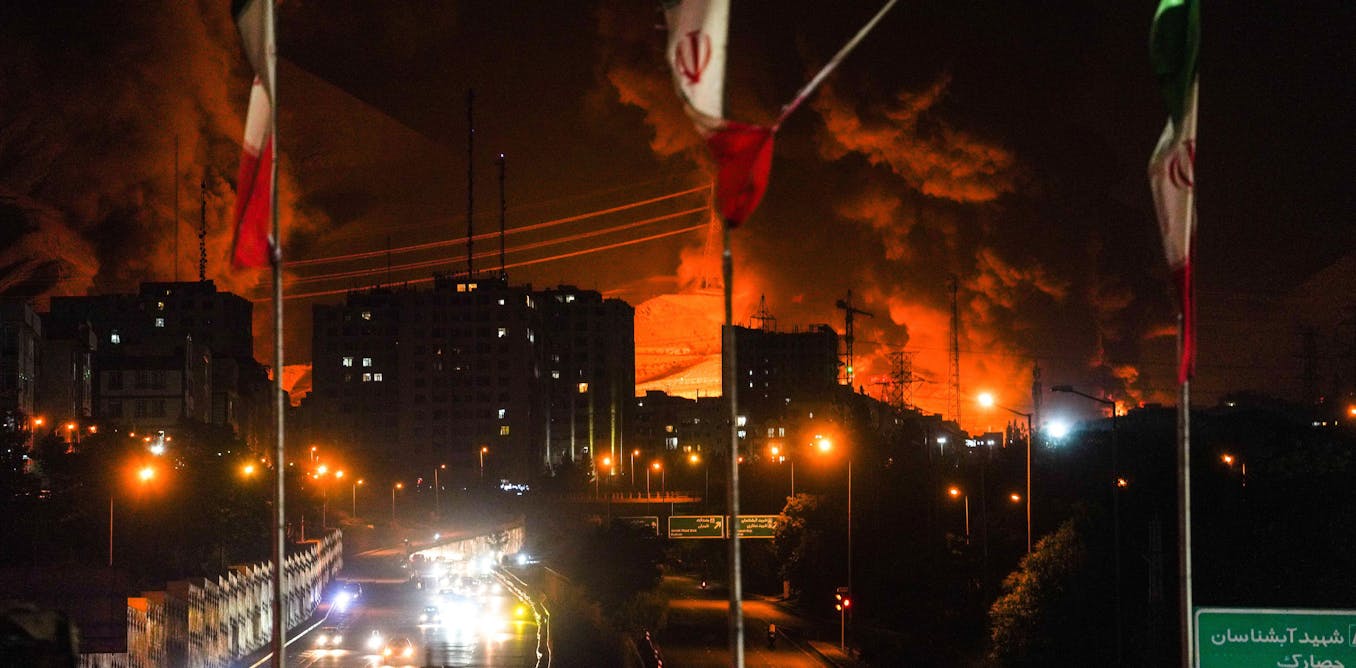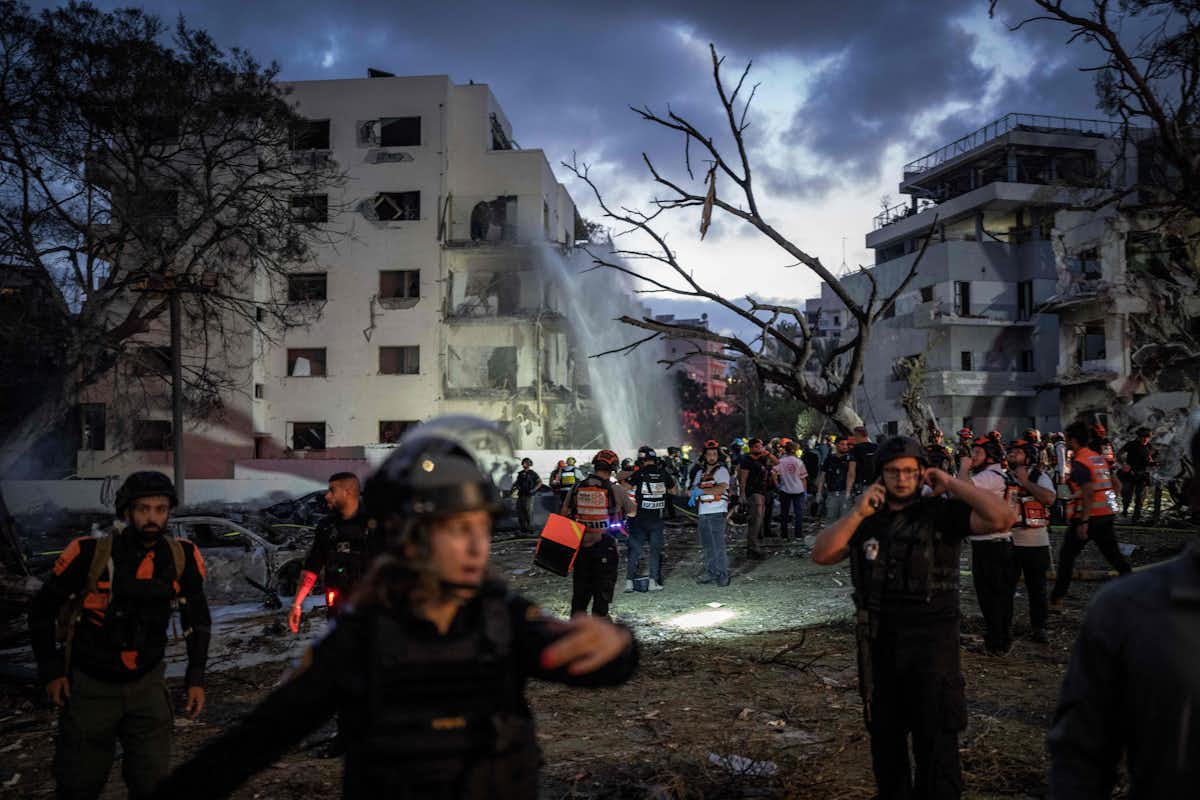
In the early hours of June 13, Israel launched its largest-ever attack on Iran. Airstrikes involving more than 200 aircraft targeted nuclear and missile facilities, as well as key figures in the Iranian military and nuclear programme leadership. The attack, codenamed “Operation Rising Lion”, appears to have been supported on the ground by Israeli agents operating drones positioned deep within Iranian territory.
In one sense, this attack has been a long time coming. Over the past 15 years, Israel has repeatedly threatened to attack Iran, arguing that Tehran harbours nuclear weapons aspirations that pose an existential threat to the Israeli state. Israel’s prime minister, Benjamin Netanyahu, said as much in a televised address announcing the same-day military operation in which he placed the nuclear issue front and centre: “We struck at the heart of Iran’s nuclear weaponisation program.” But why has Israel chosen to act now?
Clearly, we are looking at a dynamic situation from the outside in, but there are some important points worth considering. First, events over the past 12 months or so have undermined Iran’s ability to deter adversaries, which has left the regime exposed. Israel’s response to an Iranian missile attack in October, for example, seriously degraded Iran’s air defences as well as missile production capabilities. This created weaknesses that Israel has since exploited in its renewed military campaign.
Looking more broadly, the fallout from the October 7 attack by Hamas on Israel has decimated the proxies that Iran spent decades cultivating in the Middle East. The brutal war in Gaza has decimated Hamas, while to the north, Hezbollah is severely degraded after its own 14-month war with Israel.
Add to this the fall of the Assad regime in Syria, and it is clear that Iran’s so called “axis of resistance”, a key pillar of the country’s deterrence posture, is now a dramatically reduced force. Israel has been emboldened by these events. It now clearly sees a unique opportunity to further degrade a major adversary – and potentially bring about regime change.
What’s more, Iran’s nuclear programme has continued to advance since Donald Trump withdrew the US in 2018 from the joint comprehensive plan of action (JCPOA). This was the 2015 deal negotiated during Barack Obama’s presidency that rolled back the country’s nuclear capabilities in return for a relaxation of harsh sanctions against Iran.
In March, the Washington-based – but non-partisan – Institute for Science and International Security reported that Iran could convert its current stock of 60% enriched uranium into enough weapons-grade uranium for seven nuclear weapons at the Fordow fuel enrichment plant. This could be done in as little as three weeks.
At the same time, the US director of national intelligence, Tulsi Gabbard, told the Senate intelligence committee on March 27 that the intelligence community “continues to assess that Iran is not building a nuclear weapon”.
So this raises the question of whether the Israeli government had intelligence that the Iranians were moving forward with weaponisation. It is possible that Iran was preparing to make a dash for the bomb, crossing an Israeli red line and triggering action – although there is currently no evidence to support this theory. What is clear, however, is that Iran’s brinkmanship around its effort to hedge its bets on a nuclear option meant it was always operating in a dangerous space.
Was the Israeli attack inevitable?
At first sight, the answer to this seems obvious. For years now, Israel has been very clear that it will not accept a nuclear armed Iran. Yet Tehran has insisted on a nuclear programme that appears to go well beyond what is required for civil nuclear purposes. On June 12, the International Atomic Energy Agency declared that Iran was not complying with its nuclear safeguards obligations.
By most estimates, Iran is not far from the bomb and Israel has finally taken action – ostensibly on this basis.
Had Iran curbed its nuclear advancement and continued to comply with its IAEA obligations, Israel would have found it more challenging to justify any military action politically. In the same vein, if Iran had made quicker and greater progress in its nuclear talks with the Trump administration on reaching some form of new deal, this would also have made it more difficult for Israel to act.
The combination of the IAEA declaration and the lack of acceptable progress in talks with the US clearly influenced Israeli decision making. So why did the Iranian regime not take more concrete steps in this direction?
Iran’s nuclear ‘hedging’
The answer goes to the heart of Iran’s deterrence posture. Alongside its conventional forces and its infamous axis of resistance, Iran has sought to leverage its nuclear programme for influence.
Nearly ten years ago, we argued that Iran was engaged in a strategy of “nuclear hedging”. The value of this approach lies in the potential for a state to position itself relatively close to the bomb without incurring all the negative – including potentially military – consequences of a fully-fledged nuclear weapons programme, where the goal is to cross the threshold as quickly as possible.

Yet hedging is a delicate balancing act that requires plausible deniability of weapons intent. A step too far can undermine any idea that the nuclear development is for civilian use, instead inviting military intervention.
Conversely, too few steps towards a credible breakout capability and hedging has little value. For any coercive or deterrent benefit to be obtained, a state must be perceived by others as relatively close to having the bomb.
With the deterioration of Iran’s regional power over the past year, the value to Tehran of its nuclear programme has become much greater. This may help to explain why Iran did not take firm steps to reduce external concerns about its nuclear intentions.
Tehran is likely to have factored the cost of being seen to give in to external pressure on its nuclear programme. At home there is the risk that the regime’s hold on power could be weakened by capitulation to external pressure from the US, and Israel in particular. Regionally, the power costs would include losing valuable influence over other states across the Middle East.
At the same time, the US government has changed its stance since the JCPOA deal was struck during Obama’s presidency in 2015, allowing Iran some small degree of enrichment capacity. The first Trump administration pulled the US out of the JCPOA in 2018 depicting it as a flawed agreement.
In Donald Trump’s second term, his administration has continued to take a hard line, pushing for Iran to give up enrichment. From an Iranian perspective, the benefits of rolling back its capabilities failed to materialise.
This is a rapidly evolving situation. But even at this early stage, this case demonstrates clearly the risks associated with Iran’s strategy of nuclear hedging.![]()
Matthew Moran, Professor of International Security, King’s College London and Wyn Bowen, Professor of Non-Proliferation & International Security, King’s College London
This article is republished from The Conversation under a Creative Commons license.

